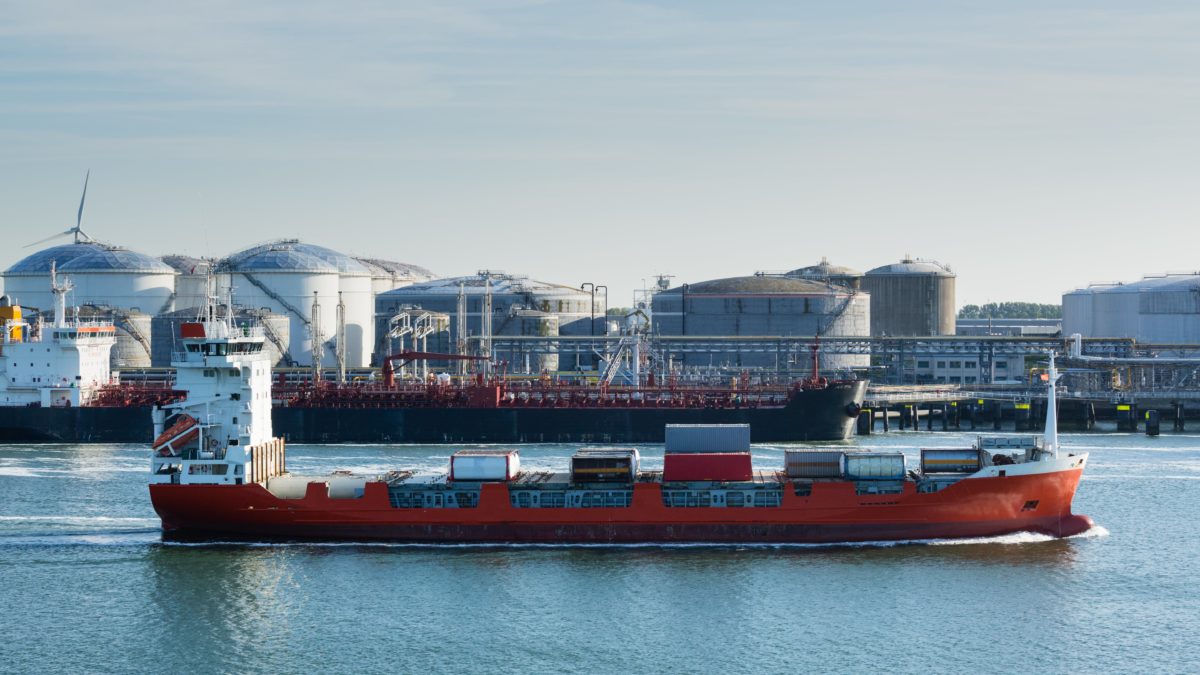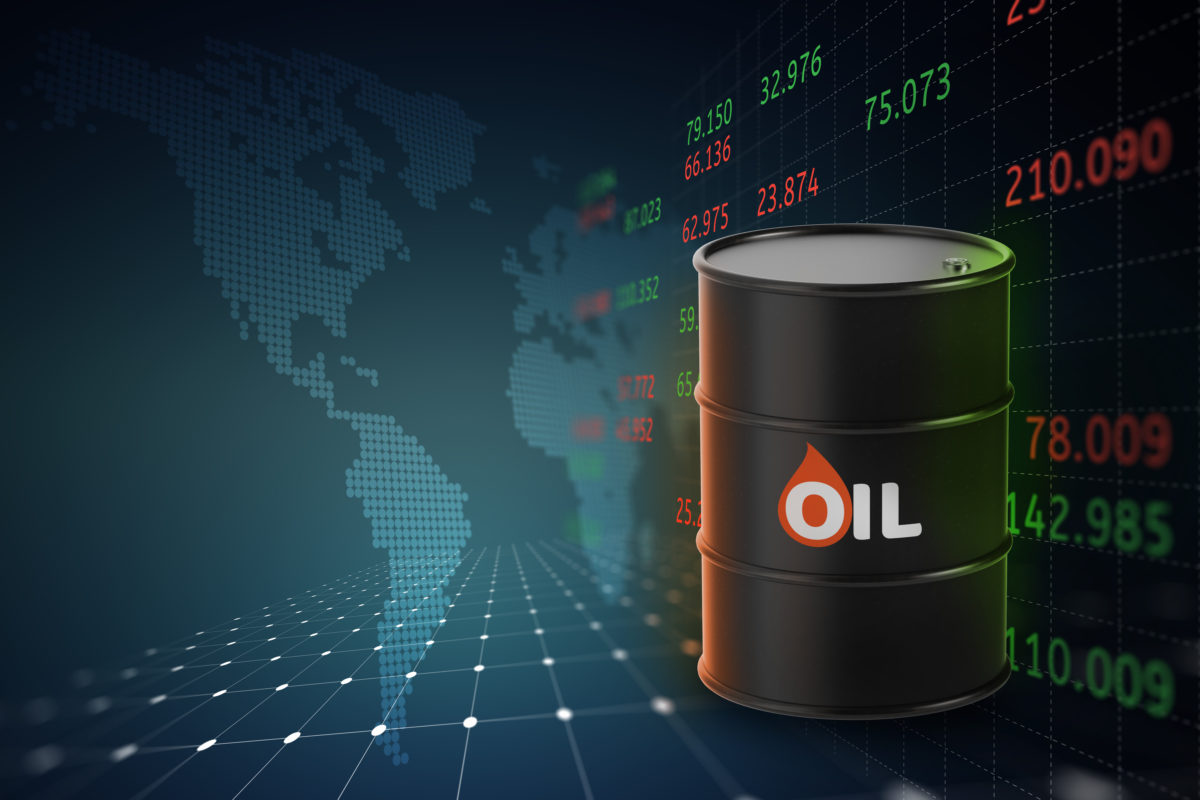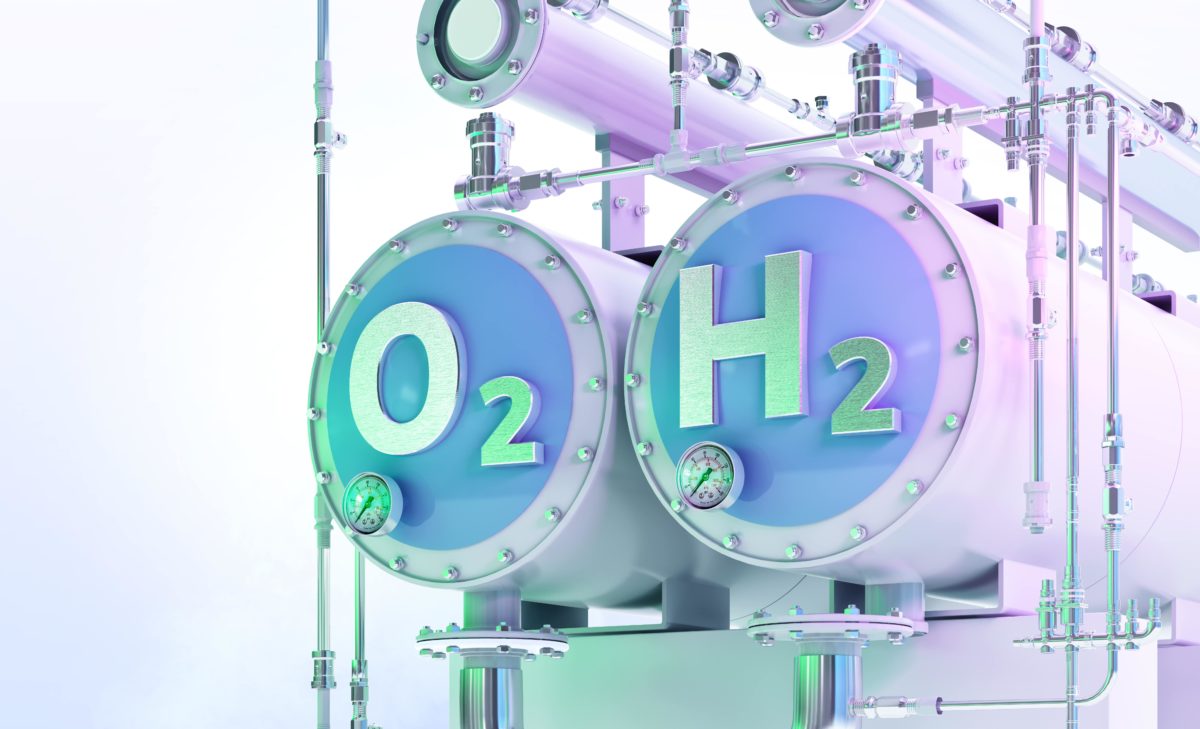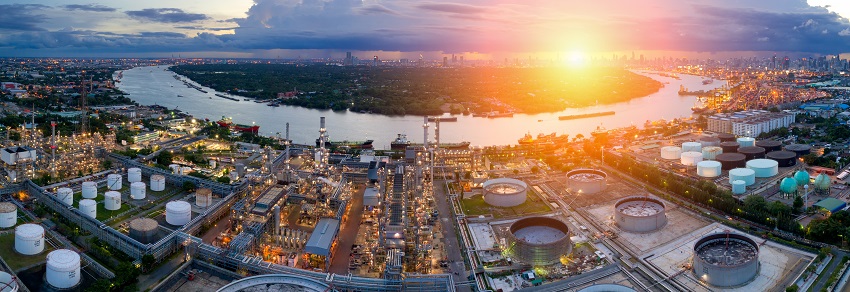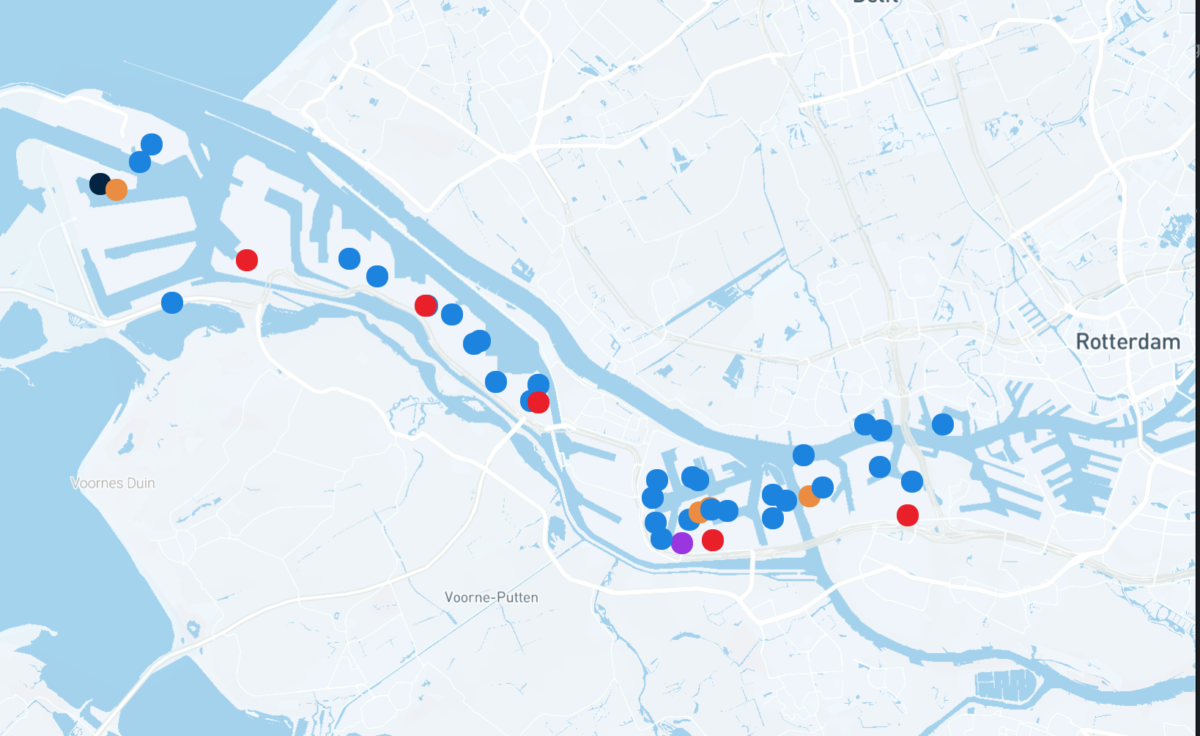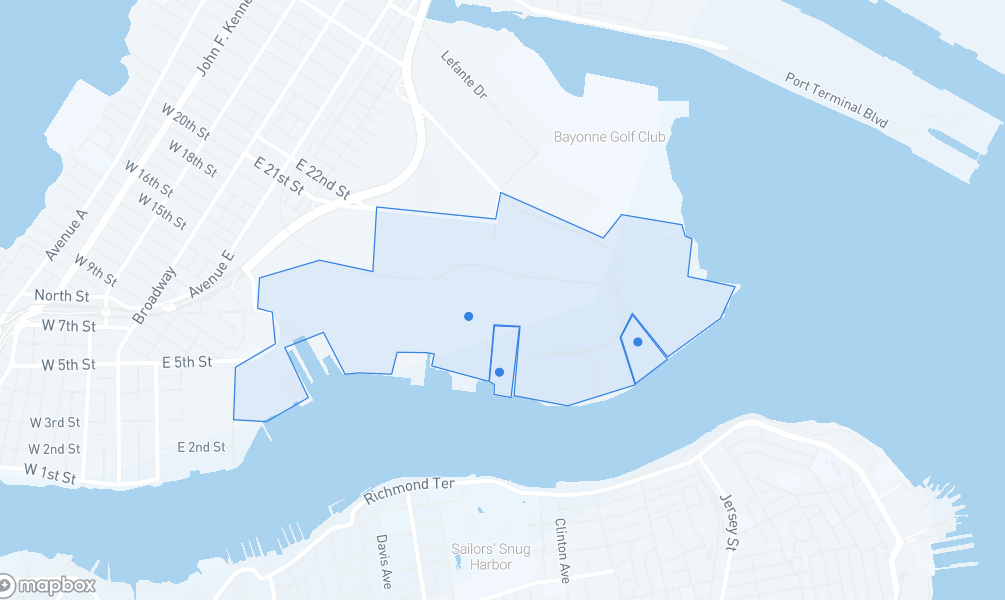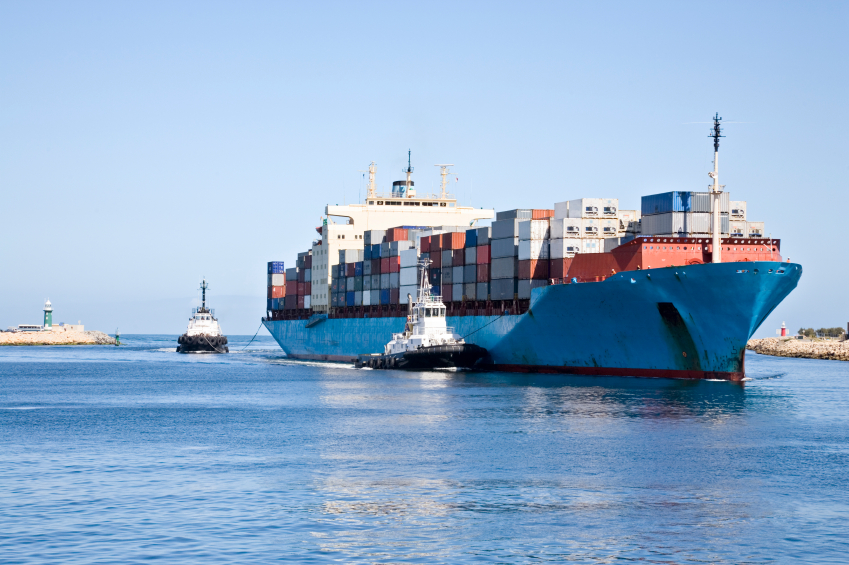The redeveloper is eyeing warehousing allowed in the plan
Bayonne has adopted a redevelopment plan for 140 acres of industrial area in Constable Hook, including the former Exxon site off New Hook Road, clearing the way for potential warehouses. The area is currently characterized by tank farms, marine terminals, and industrial uses related to its location along the Kill Van Kull.
The Planning Board adopted the redevelopment plan at its April meeting. The plan was presented by City Planner Suzanne Mack.
Industrial redevelopment plan
According to Mack, the redevelopment area not only includes the Exxon site, but also the International Matex Tank Terminal (IMTT) site to the north. In total, the area encompasses 140 acres of land in Bayonne, with 90 acres being the Exxon site, 40 acres being the IMTT site, and the other 10 acres being a Conrail property for a rail line that separates the two sites.
The area has been industrial in nature for decades prior to Exxon closing shop. And Mack said the new zoning overlay present in the redevelopment plan preserves that heavy industry. According to Mack, this was to allow IMTT, which is an active heavy industrial site, to remain that way if it so chooses.
“There are three developers here,” Mack said. “One is Conrail, which remains in place. IMTT and Exxon are two other separate developers. It’s unclear at this time whether IMTT’s portion will be developed at the same rate and with the same uses as Exxon. So by allowing them to do an overlay, we would use the redevelopment agreement to determine whether or not they stay and just use the underlying I-H [heavy industrial] zoning.”
What is permitted under the plan
Mack said there were high design standards for industrial buildings nowadays that the city was requiring in the plan.
“Many industrial buildings that are being developed now have very nice buildings and we’ve included that,” Mack said.
According to Mack, another newer regulation incorporated into the plan requires that garbage and recycling be handled privately.
“This is a new regulation we’re including,” Mack said. “All refuse and recycling should be handled and disposed by private entities. They will not rely on the municipality for handling of disposal. That’s a new suggestion that’s going to be put in all of our redevelopment plans in order to not have the city have the burden of trash pickup.”
Since it is along the waterfront, although in an industrial area, a walkway does not need to be constructed but the redeveloper must pay for the construction of an offsite walkway. And the site’s waterfront will be developed as a water dependent use or will remain undeveloped and reserved for said uses in the future.
In response to general questions, Michael Miceli, the attorney for the site redeveloper Duke Realty, LLC, said that the redeveloper was contemplating warehouses for the site that would employ approximately 100 people per building. However, it is not clear how many warehouses would be constructed at the time, but Miceli estimated anywhere between three and six.
“It’ll depend on the scope,” Miceli said. “It could be anywhere from 300 to 600 depending on the scope of the actual buildings that are approved.”
Commissioner concerns addressed
Commissioner Sharon Ashe-Nadrowski, the city council’s designee on the planning board who is also City Council President and a mayoral candidate, was concerned about the new truck traffic the redevelopment would bring to the area. In response, Mack noted there is $5.5 million in grants the city was receiving to address the roadways in the area.
“We’re doing a whole new layout of new utilities and roadway connections that will service the site,” Mack said. “We did that prior to the development of the site.”
However, Mack asked the city council to extend the grant to be awarded by March of next year. The council approved the request at its April meeting, combining the grant with another to provide for the roadway overhaul. Mack added that the site is going to have a lot of large truck traffic.
“It’s going to be a warehouse facility,” Mack said. “So there will not be large trucks.”
Trucks that are heading to the site will use Route 440 to get to the site, not local roads.
“They will come down Route 440 and turn onto New Hook Road,” Mack said.
Ashe-Nadrowski was still concerned about traffic, noting the industrial sites in the area that are looking to expand. Mack said there was a parking study done that she didn’t have on hand but can be presented to the board.
Neighboring properties object
An attorney representing neighboring applicants addressed the board, calling for the rejection of the plan.
Attorney Johnathan Guldin of Clark Guldin said he represented a number of neighboring properties, including: 7 Hook Road, LLC; Atlantic Cement Realty, owner of LaFarage Terminal; Duraport Realty 4, LLC; 160 East 22nd Street Realty Urban Renewal LLC; and 140 East 22nd Street Urban Renewal LLC, owner of the Kenrich Petrochemicals redevelopment site.
“My clients represent a handful of approximately 15 or 20 property owners in this area,” Guldin said. “They are either adjacent to or in close proximity to this particular site. They object to this redevelopment plan. No one has consulted them on this plan.”
Guldin said that one of the lots was not noticed on the agenda and this was a procedural defect. He added that traffic was an issue in the area.
“The Exxon site has been vacant for over a decade, but historically were serviced by either marine vessel or rail,” Guldin said. “The warehousing uses that we’re talking about or are being contemplated on the redevelopment plan contemplates three to six buildings. Hundreds of thousands of square feet of warehousing will obviously have significant impacts on local, county, and state roadways and circulation in that Constable Hook area. It is already in very poor condition…. It’s a maze and this plan would introduce significant industrial traffic from the farthest east property near the Kill van Kull up until Route 440. It would have a dramatic impact on not just traffic but infrastructure because there are no sidewalks. The roads are in poor condition. There is no sanitary sewer, there is no water. There’s no real plan other than we’re going to address it later on.”
Gulden asked the board to table the plan until the property owners’ input is heard or until further considered by city professionals.
Redeveloper responds
Following that, Miceli took the podium to defend the project. He said the aforementioned lot was in fact noticed and it was typographical error on the agenda. He added there does not need to be a notice when requesting the board to look at a site to determine if it is an area in need of redevelopment or when approving redevelopment plans.
When it came to concerns about traffic, Miceli noted there was a traffic study with the plan.
“It was reviewed by the City Planner and City Engineer,” Miceli said. “They had over a month and a half to review it. If there were any concerns, they could have put them in the redevelopment plan, but they did not.”
According to Miceli, the redeveloper will construct roads that will benefit the area.
“Drive down there now,” Miceli said. “There are no roads. This will lay out a road network. We will need to show you that road network works.”
And the traffic generated by the warehouse is not going to impact the area, according to Miceli.
“Based on our studies, it’s not going to be a significant impact one way or the other between the two,” Miceli said. “So the traffic improvements will be addressed. We will pay our fair share. This is, I hope, going to be a big project and we will significantly upgrade a decaying infrastructure that’s been sitting there for how many years? How long do we have to wait before we clean this up and erase Exxon’s environmental liability down there.”
Cleaning up a Brownfield site and using union labor
Miceli said this cleans up a Brownfield site, best defined as a former industrial site which is now vacant and contaminated.
“Can you think of a dirtier site in Bayonne?,” Miceli said. “Maybe one or two. But this is one of the most contaminated sites in the state that we’re cleaning up. Duke is doing that. We met with officials to hash out what our remediation plan is going to be… Over the next several months, there will be toxic things carted out of our city and that legacy is going to be erased step by step… We are doing remediation, this promotes economic activity.”
Miceli said this plan would allow redevelopment that would bring back jobs lost when the Exxon site closed in the city.
“I’m sure we all know someone who lost their job or was forced into retirement when Exxon closed,” Miceli said. “Nothing’s happened down there for years. It’s a whole other city. You can’t see from one end of the site to the other. It’s time to do this.”
Patrick Kelleher, president of the Hudson County Building and Construction Trades Council, said he favored union labor for the project and spoke to the attorney to the redeveloper about it.
“I represent all those union people here that are looking to go to work on this project with Duke,” Kelleher said. “We want to make sure union labor is on all of these jobs in Bayonne. It’s all about giving our Bayonne residents an opportunity. Because they all pay taxes in their town and they want to go to work in this town.”
Ultimately, the board voted unanimously to adopt the plan, with Ashe-Nadrowski adding: “I think it’s great we’re getting rid of this Brownfield and bringing this back to being a productive site.”
At the April meeting of the Bayonne City Council, the plan was also introduced by the council with a hearing and vote set for its May meeting. After that, Duke Realty, LLC will have to go before the planning board again for final site plan review before construction can begin.
Hudson Reporter by Daniel Israel, May 20, 2022

